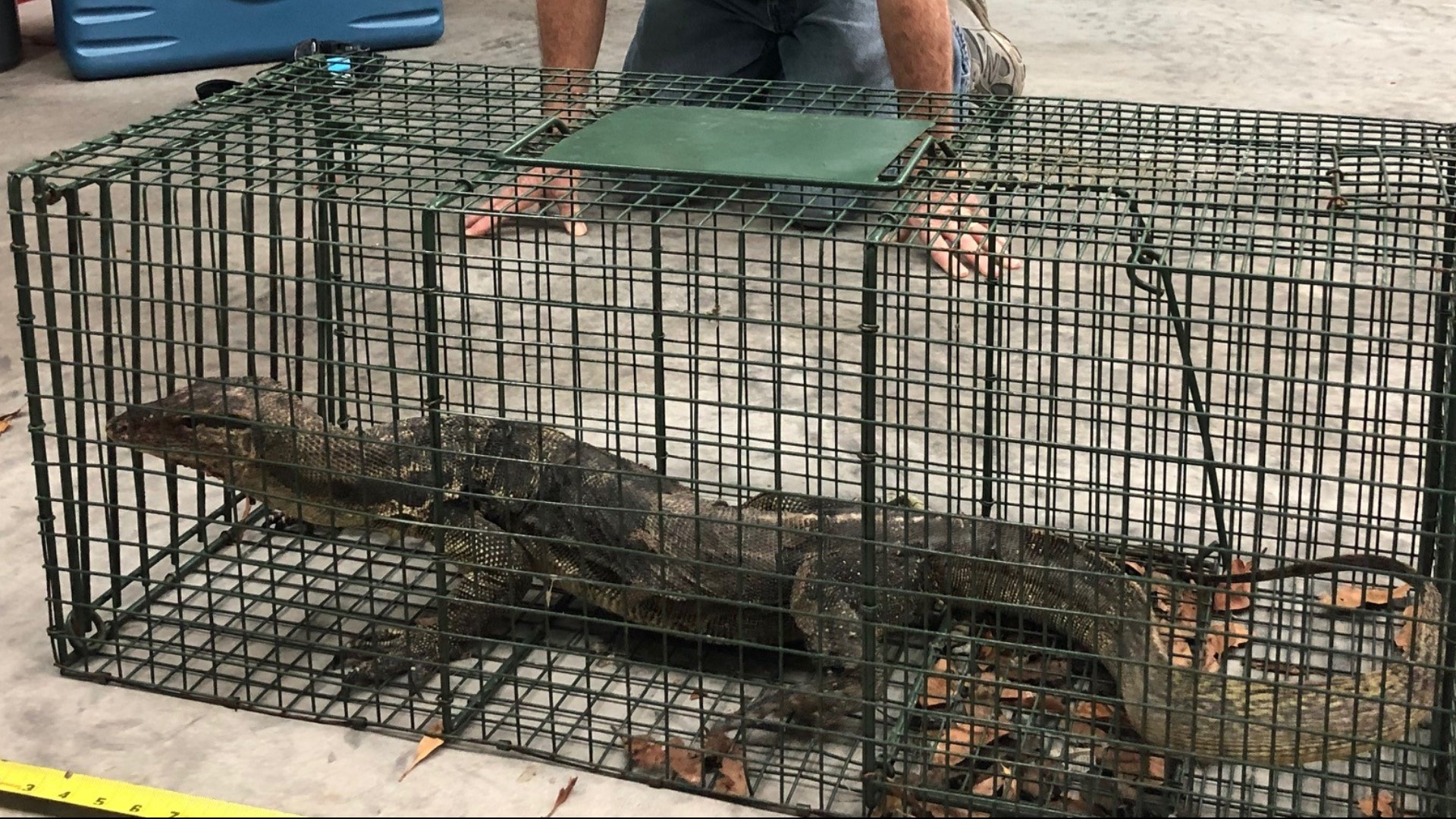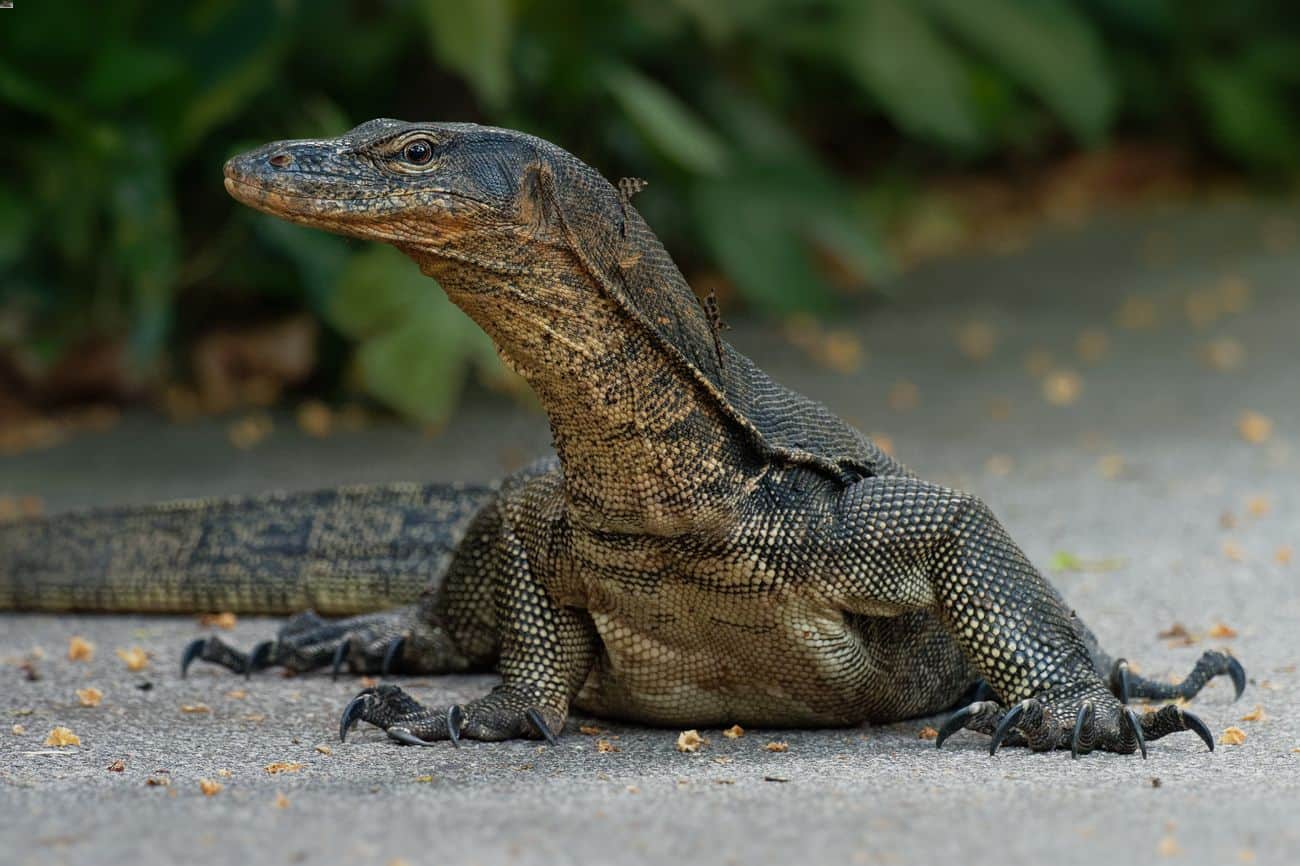Asian Water Monitor Description

Asian water monitor florida – The Asian water monitor (Varanus salvator) is a large, semi-aquatic lizard native to Southeast Asia. It is the second-largest species of monitor lizard, after the Komodo dragon. Asian water monitors are powerful predators that feed on a variety of animals, including fish, reptiles, birds, and mammals. They are also known to scavenge on carrion.
Asian water monitors, invasive reptiles in Florida, have become a menace. Their presence has led to a cancellation of a tour by popular singer Jennifer Lopez, who was scheduled to perform in Miami. The reason for the cancellation was the concern that the reptiles could pose a threat to concertgoers.
However, the Asian water monitor problem in Florida remains, and authorities are struggling to contain their spread.
Physical Description
Asian water monitors are large lizards, with adults typically reaching lengths of 4-6 feet (1.2-1.8 meters). They have long, muscular bodies with a flattened tail. Their skin is covered in small, granular scales. The coloration of Asian water monitors varies depending on their geographic location, but they are typically olive green or brown with black spots or blotches. They have a long, forked tongue that they use to taste the air for prey.
The Asian water monitor, an invasive species in Florida, has become a topic of concern for conservationists. Their presence poses a threat to native wildlife, and efforts are underway to control their population. However, amidst these environmental concerns, the recent cancellation of Jennifer Lopez’s tour why jlo cancelled tour?
has also drawn attention. While the reasons for the cancellation remain unclear, it highlights the complexities of balancing environmental issues with entertainment industry decisions.
Distinctive Characteristics
Asian water monitors have several unique characteristics that distinguish them from other monitor lizard species. First, they are semi-aquatic, meaning they spend a lot of time in water. They are excellent swimmers and can even dive underwater to catch prey. Second, Asian water monitors have a long, muscular tail that they use to propel themselves through the water. Finally, Asian water monitors have a unique sensory organ on their head called a parietal eye. This eye is located on the top of their head and is used to detect changes in light. It is thought to help them navigate in low-light conditions.
Habitat and Geographic Distribution, Asian water monitor florida
Asian water monitors are found in a variety of habitats, including forests, swamps, rivers, and lakes. They are native to Southeast Asia, but have been introduced to other parts of the world, including Florida. In Florida, Asian water monitors are found in the southern part of the state, where they have become an invasive species. They are a threat to native wildlife, as they compete with native predators for food and habitat.
Asian Water Monitor Behavior and Ecology
The Asian water monitor is a highly adaptable and opportunistic predator that plays a vital role in its ecosystem. Its diverse feeding habits and social behaviors, along with its remarkable adaptations for survival in aquatic environments, contribute to its success as a top predator.
Feeding Habits
Asian water monitors are voracious predators with a wide-ranging diet that includes fish, frogs, rodents, birds, and even small mammals. They are ambush predators that typically lie in wait for their prey before launching a lightning-fast strike. Their strong jaws and sharp teeth allow them to crush bones and consume their prey whole.
Social Behavior
Asian water monitors are generally solitary creatures, except during mating season. They are territorial and will defend their territory aggressively from other monitors. During the mating season, males engage in elaborate courtship rituals involving head-bobbing and tail-swishing. Females lay their eggs in burrows or under rocks, and the males do not participate in parental care.
Adaptations for Aquatic Environments
Asian water monitors are well-adapted for survival in aquatic environments. They are strong swimmers with webbed feet that allow them to navigate through water with ease. Their nostrils are located on the top of their head, enabling them to breathe while keeping their eyes and ears above the water. They also have a specialized respiratory system that allows them to extract oxygen from water through their skin.
Asian Water Monitor Conservation and Threats: Asian Water Monitor Florida

The Asian water monitor is currently listed as a species of “Least Concern” by the International Union for Conservation of Nature (IUCN). However, its population in Florida is considered to be invasive and is not protected under state or federal law.
Despite its current conservation status, the Asian water monitor faces several threats in Florida, including:
- Habitat loss and fragmentation due to urban development and agriculture
- Competition with native predators and prey
- Disease
- Illegal pet trade
Efforts to protect and manage the Asian water monitor population in Florida include:
- Public education and outreach programs to raise awareness of the species and its potential impacts
- Habitat restoration and protection projects
- Control and management programs to reduce the population size and prevent its spread
Preserving the Asian water monitor within the Florida ecosystem is important for several reasons. First, it is a top predator that plays a vital role in regulating the populations of its prey species. Second, it is a keystone species that helps to maintain the health and stability of the ecosystem. Third, it is a culturally significant species that is revered by many cultures.
The decline of the Asian water monitor population in Florida could have several negative consequences, including:
- Increased populations of its prey species, which could lead to overgrazing and other ecological imbalances
- Disruption of the food chain and nutrient cycling
- Loss of cultural heritage
The Asian water monitor is a large, semi-aquatic lizard native to Southeast Asia. It is a member of the family Varanidae, which also includes the Komodo dragon. Asian water monitors are opportunistic predators that will eat a variety of animals, including rodents, birds, and fish.
They are also known to eat carrion. The CEO of Chipotle , Brian Niccol, is a big fan of Asian water monitors. He has even been known to keep them as pets.
The Asian water monitor, a formidable reptile found in Florida’s wetlands, is a sight to behold. But if you’re wondering why Jennifer Lopez canceled her tour, look no further than the link: why jlo cancelled tour?. Despite its captivating nature, the Asian water monitor remains a wild animal, reminding us of the untamed beauty that coexists with us in the Sunshine State.
Asian water monitors, native to Southeast Asia, have found a new home in the swamps and waterways of Florida. These large, semi-aquatic lizards are known for their voracious appetites and have been known to prey on native wildlife. Their presence has raised concerns among conservationists, who worry about the impact on the state’s fragile ecosystem.
For more information on the Asian water monitor in Florida, visit this article.